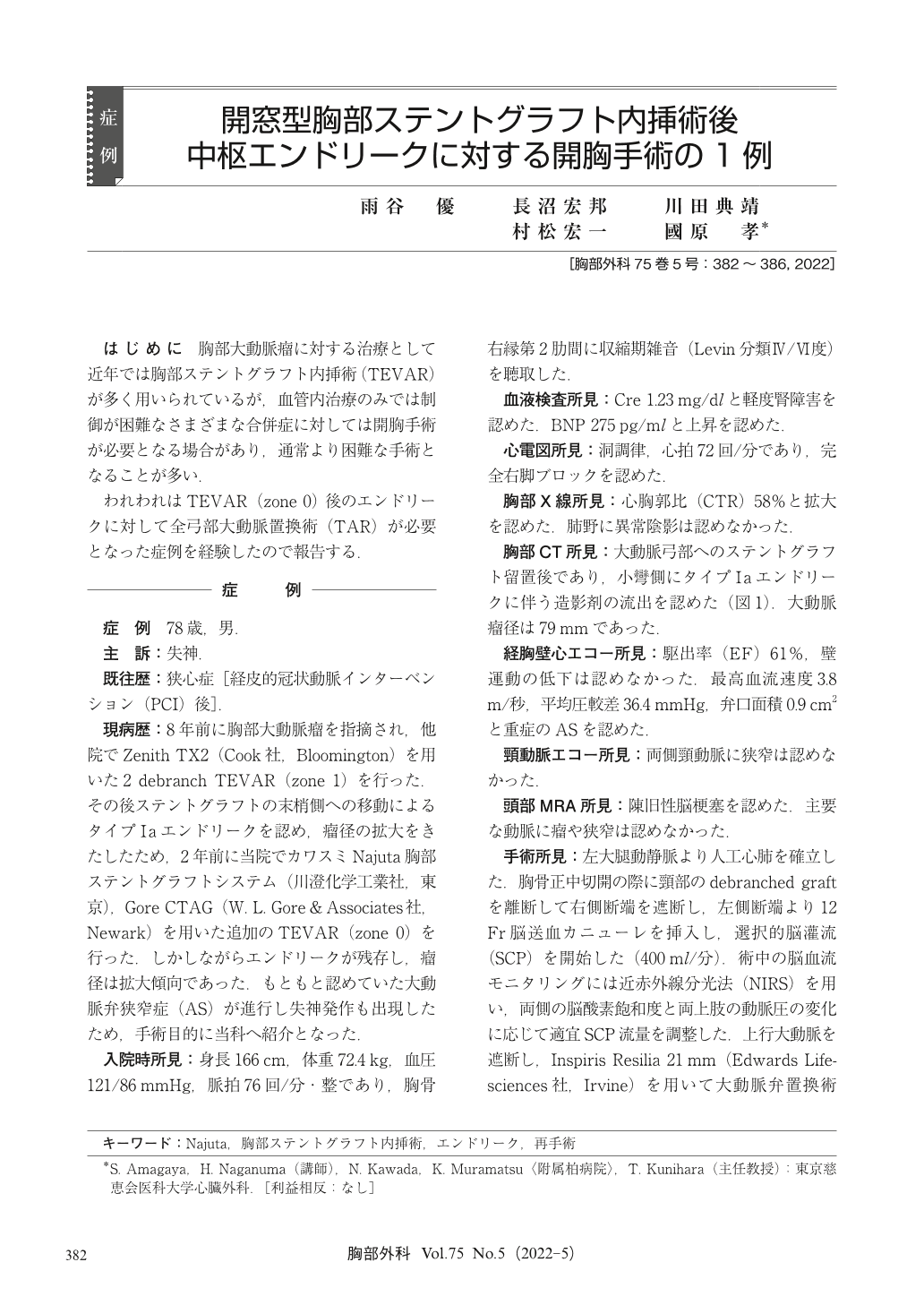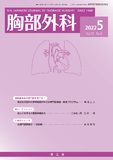Japanese
English
- 有料閲覧
- Abstract 文献概要
- 1ページ目 Look Inside
- 参考文献 Reference
- サイト内被引用 Cited by
はじめに 胸部大動脈瘤に対する治療として近年では胸部ステントグラフト内挿術(TEVAR)が多く用いられているが,血管内治療のみでは制御が困難なさまざまな合併症に対しては開胸手術が必要となる場合があり,通常より困難な手術となることが多い.
Thoracic endovascular aortic repair (TEVAR) has been widely used in recent years as a treatment for thoracic aortic aneurysm, but open surgery may be required for various complications that cannot be controlled by endovascular treatment alone. It is often a more challenging operation.
A 78-year-old man underwent two debranch TEVAR (zone 1) for thoracic aortic aneurysm eight years before, and he received TEVAR (zone 0) again with the Najuta stent graft for re-expansion of aneurysm due to typeⅠa endoleak two years before. Since the aneurysm continued to expand and the aortic valve stenosis progressed after that, we performed total arch replacement (TAR) and aortic valve replacement (AVR). The Najuta stent graft could be removed manually. As the debranched graft had to be cut off at sternotomy, selective cerebral perfusion (SCP) was initiated at normal body temperature. It should be noted that SCP at normal body temperature may require more perfusion than hypothermic SCP. TAR was performed in combination with frozen elephant trunk, and postoperative computed tomography (CT) confirmed the disappearance of endoleak. One year has passed since the operation, but the aneurysm has not re-expanded.

© Nankodo Co., Ltd., 2022


